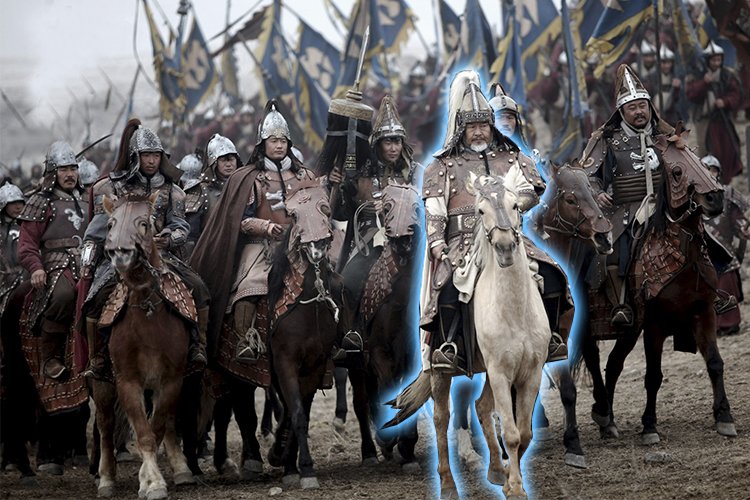Genghis Khan’s Descendants: Will The Crypto Experiment Be The Economic Attack Of The New Golden Horde

Mongolia is not the only country in the world on the verge of default, but the first who is trying to get out of the financial recession through the development of digital economy.
Six years ago, this steppe power was one of the world leaders in economic growth. From 2011 to 2014, the country's GDP increased at a rate of 15-17% per year. And all of this was caused by the fact that Mongolia borders only with two countries - China and Russia, which exported technology and electricity to the Mongols and Chinese. Besides, China imported about 85% of the main Mongolian asset — the copper. But when 2016 came, the copper price fell by 26%, but the state and defense spending remained at the same level.
Mongolian Tugrik became the leader of the falling Asian currencies. Only in 2016 it lost 11% of value. In 2017 the negative trends of the economy could lead the government to default: at that time the sovereign debt of Mongolia stands at $5.5 billion. The Central Bank and the Finance Ministry barely managed to get $500 million in order to safe the country from declaring it as a bankrupt last year.
The leaders of the state saw a way out of the deadlock with the help of the cryptocurrency market development, especially since there is nowhere else to look for a cure for the crisis. The ban on transactions with virtual assets in neighboring China gave Mongolia a unique chance to lure digital business into its territory, for example, in form of the mining companies.
Until 2018, 60% of crypto-currency farms were in China, but the homeland of Genghis Khan offers miners cheap electricity - $0.05 per kWh. For comparison: in China, a kilowatt costs $0.09, and in the US - $0.4. Moreover, the situation is paradoxical: Mongolia consumes more electricity than it produces, but Russian export prices allow selling this resource cheaper than it costs in the country of origin. In order to compensate for the energy shortage in the coming years, the Mongolian leadership is going to implement an ambitious project to build its own network of coal-fired power plants. According to forecasts, the price of electricity can be reduced to $0.03 per kWh thanks to this network.
In addition to relatively cheap energy, there is another significant positive moment for miners — the spread of broadband Internet and the development of mobile networks, which, according to officials, are available in 90% of the country. In other words, Chinese cryptocurrency miners have something to attract.
With regard to the development of the digital market, Mongolian politicians speak with a truly childlike: "Our task has always been to find the ways to diversify the economy. If China banned the cryptocurrency mining, Mongolia needs to solve it, - said the Deputy of the Great State Hural Nyam-Osor UCRAL. - I assume that miners want from the government not regulation, but support of energy supply. Needless to say, the demand for power plants will grow, and this will help to increase employment and income".
Perhaps the word “income " is the key here among the others. Production and turnover of digital assets in any case replenish the budget of the country: either directly through taxation, where it exists, or by increasing the energy market and income of production companies. Anyway, several cryptocurrency projects have already been launched on the territory of the country, with the help of Japanese and Korean investors, and with the support of the state. Participants of one of them claim that transactions of their coins are 10 times faster than bitcoin.
Representatives of government agencies are actively involved in the development of the digital market: not so long ago, the Mongolian delegation visited the South Korean cryptocurrency exchange Bithumb. The Prime Minister of Mongolia Ohnehin KHURELSUKH got acquainted with the activities of one of the largest crypto exchanges with interest. By the end of the meeting he stated that Mongolia "is committed to participate in the blockchain and cryptocurrency sectors of the economy through concerted efforts to revive the solar industry in the country".
But the point here is not only in the solar industry, of course, neither in the mining nor even in digital currencies. If we try to combine these disparate facts into a single system, we will get a very interesting precedent, when the raw material economy with the help of digital social technologies is trying to reach an innovative vector of development. Today Mongolia is the only country in the world where herding cattle breeding has been preserved. 800 thousand inhabitants among the 2.8 million roam the steppes after herds of sheep, deer, goats and camels. The rest are either involved in raw materials production, which are dependent on the world price situation, or serve in the army or work in public administration. The recent crisis has shown that this structure of human capital is leading the economy to a standstill.
Many states in Latin America, Africa, Asia are trying to emerge from the crisis with the help of crypto economy. But Mongolia is the only one which can do this, because its financial system is sufficiently institutionalized and, therefore, is able to initiate and implement management decisions to control the market situation.
The World Bank forecasts Mongolia's economy to grow by 8% in 2019. What will be the share of the digital economy in this trend, we will soon see, but it is already clear: the descendants of Genghis Khan are trying to conduct an interesting experiment that can change the face of the global economy. And then perhaps China will have to remember that the name of its national currency came from the Mongolian dynasty, which ruled the country in the XIII-XIV centuries.